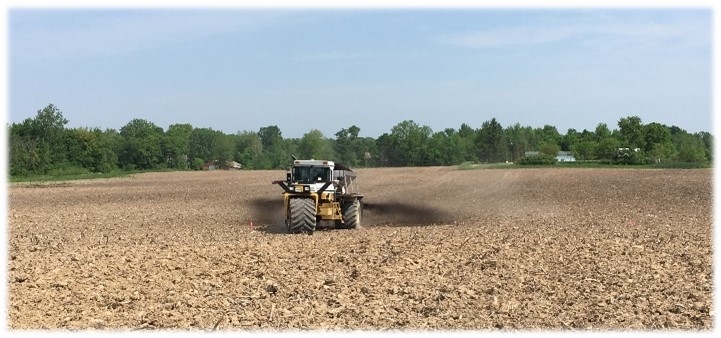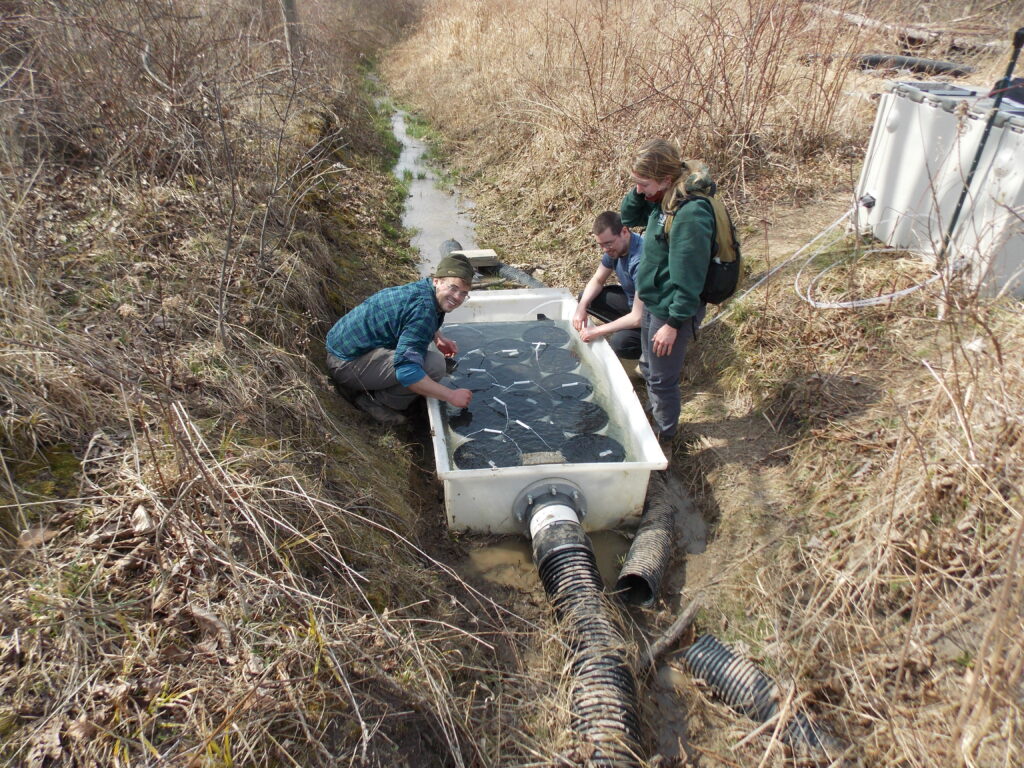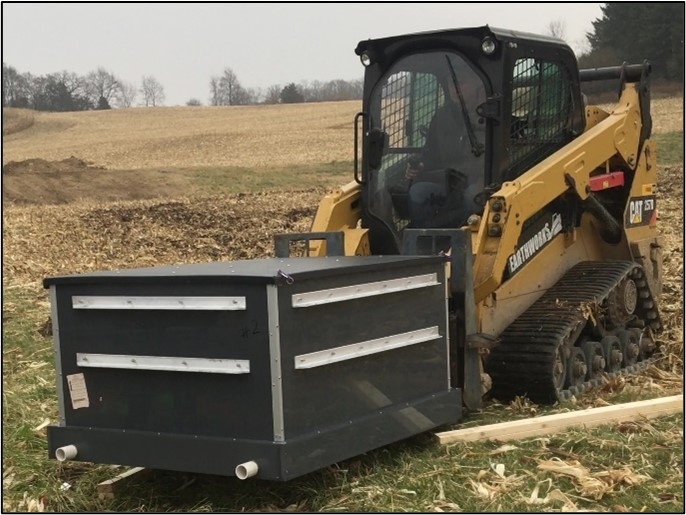A Note from GLPF –
An exciting Great Lakes Protection Fund-supported project has been testing circular economy principles on farm fields. A primary focus has been on restructuring taxes (or fees) farmers and other landowners make to drainage districts to reward those that manage their land to improve water quality. Two other innovative practices have been tested that: 1) support soil health using specialized compost produced from food wastes and other traditionally landfilled organic waste streams, and; 2) the use of special filters that can be installed at the end of a tile drain outlet to capture soluble phosphorus leaving farm fields.
I’m pleased to share with you this guest blog by the project leads, Mark Kieser and Mike Foster, where they describe the different interventions they tested on fields in Michigan, Wisconsin and Indiana. Be sure to watch the video describing the novel drainage fee assessment methods deployed in LaGrange County so you can incorporate this approach in your county to improve the Great Lakes ecosystem. Enjoy!
Shannon Donley, Project Implementation Manager
—————
Advancing Systematic and Fundamental Changes in Agricultural Water Resources Management
In 2017, Kieser & Associates, LLC and project partners including the St. Joseph River Basin Commission, County agencies and local producers in Michigan, Indiana and Wisconsin, set out to reshape agricultural operations that produced benefits for farmers and water quality. We piloted approaches that followed circular economy principles seeking to rebuild soil health and increase crop resiliency, incentivize land management improvements, as well as capture and recover what are otherwise accepted field losses to the water environment…all the while benefiting farms and creating new business opportunities in the region.
Alternative Drain Apportionment
Landowners in legal drainage districts must pay assessments for maintenance and improvements of public drainage systems that serve them; assessments which are generally based on acreage or linear extent of the adjacent drainage. Our efforts with the Basin Commission tested new methods for calculating drain assessments that could reward farmers who implement land management practices that improve soil and water quality. The project resulted in a new drain assessment methodology being piloted on a total of 33,369 acres over the course of 2020-2022, re-allocating a total of $321,000 for drain improvements and maintenance in LaGrange County, Indiana. Reception from landowners, as well as drainage authorities, has been very positive and the county will be switching to the new methodology for all future projects. The Kieser team continues to work with the Commission to expand the use of this methodology to additional counties.

Soil Health Amendments
Soil health improvements for corn-soy rotations in southwest Michigan were targeted for application of commercially-produced compost using organic (food and food production) wastes for at-scale field applications. Improved soil health resulted in crop yield increases of 10-40 percent each year following annual spring soil amendments. Water quality benefits were not distinguishable across the two years of field applications based on intensive surface runoff and tile drain discharge monitoring. Operations for the compost supplier also did not achieve production levels to match demand during the course of the GLPF-supported project efforts.

Capturing Soluble P Losses
Successful pilot project development, field-testing and monitoring of an innovative phosphorus filter technology demonstrated an effective approach to capturing soluble phosphorus in tile drainage. Tile losses are recognized as a major source of Ag-related phosphorus loads, particularly in the Western Lake Erie Basin. A cost-effective means to capture and recover phosphorus (being closely watched for its diminishing and finite supply) provides hope for water quality benefits and economic opportunities associated with phosphorus capture.
The patent-pending Compact Agricultural Phosphorus Treatment Structure (or CAPTureTM system) provides substantial benefits over much larger, difficult to service USDA-NRCS system designs. CAPTureTM benefits include:
- A small footprint (<25 ft2 for every 20 acres of drainage) with no loss of productive fields
- >40% dissolved P removal from tile flows and runoff with long-term deployment
- Ease of installation without heavy machinery
- Easily replaceable media optimizing P capture while enhancing P recovery and reuse
- Managed hydraulics to avoid tile and field flooding
This technology exceeded expectations with second generation designs under GLPF support (below left). The CAPTure™ system is now in fourth generation design with initial production and field applications (below right).


Kieser & Associates and GLPF are continuing their collaboration with the goal of commercialization for this system. As of early 2023, it has been piloted in three locations including Michigan and Wisconsin with additional installations in progress. The project has also identified a community of practice that includes drainage district authorities, conservation managers, agricultural retailers, commodity buyers, and farmers that will extend this work beyond the initial Great Lakes pilot locations.
—————
GLPF wishes to thank Mark Kieser and Mike Foster for this post.
Mark Kieser is Principal and Senior Scientist at Kieser & Associates, which he founded in 1992. Mark has over 38 years of environmental consulting experience in addition to three years of academic research on water resource issues in the Great Lakes. Mark has also been a pioneer and leader in environmental markets for water in the U.S. and internationally. Since 1995, he has led the assessment and development of a variety of market-based incentive programs in 28 states across the U.S.
Mike Foster is an Environmental Engineer at Kieser & Associates where he works on water quality modeling and quantification methodology development, as well as software applications for a range of water resource management efforts. His work includes developing methods to quantify management impacts on water quantity and quality, developing methods to quantify lake health, and modeling nutrient loading from agricultural operations.